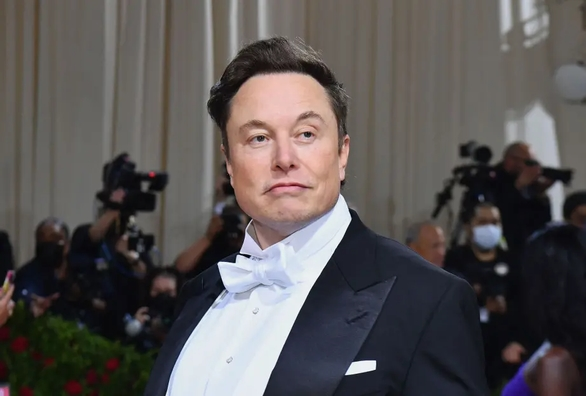The heartbreaking incident began in a remote region of South Asia, where a sudden building collapse left dozens of families in despair.
Among the survivors was Amira, an 11-year-old girl who was trapped beneath rubble for nearly 14 hours. By the time rescuers reached her, Amira was alive but gravely injured. Local doctors, faced with limited resources and outdated equipment, declared her chances of survival slim.
The complexity of her injuries demanded advanced medical intervention—something far beyond what was available in the area.
It was then that an extraordinary intervention began, one that would change Amira’s fate and rewrite the narrative of billionaire philanthropy.

A Billionaire’s Secret Mission
Within hours of the tragedy, a private jet landed at a nearby airstrip, carrying a team of elite surgeons and medical experts. Cutting-edge equipment was unloaded, and a mobile operating theater was set up inside a secure facility. At first, no one knew who had orchestrated such a massive, rapid response.
The truth soon emerged: the entire mission was funded by Elon Musk, at an estimated cost exceeding $20 million. According to those involved, Musk made it clear that publicity was not his goal. “He didn’t want attention,” said one doctor. “He just wanted us to save the girl. He told us, ‘Don’t ask about the money. Just make sure she lives.’”
The Fight for Amira’s Life
The surgery lasted nearly nine hours and utilized advanced robotic equipment flown in at the last minute. Surgeons worked tirelessly to stabilize Amira’s spine and reconstruct internal injuries. According to medical staff, without this intervention, Amira would not have survived another 24 hours.
“She’s a miracle,” said one nurse. “But the miracle was only possible because someone with unlimited resources cared enough to act.”
Why Amira?
Perhaps the biggest mystery is why Musk chose to intervene in the life of a girl to whom he had no apparent personal connection. Sources close to Musk say he was moved after seeing raw footage of Amira’s desperate rescue circulating online. “He watched the video again and again,” one aide revealed. “And then he just said, ‘We’re going in. Prepare the team.’ That’s all it took.”
This spontaneous act of compassion stands in stark contrast to the calculated moves often associated with high-profile billionaires. For Musk, it wasn’t about technology or profits—it was about saving a life.
Public Reaction: Shock, Awe, and Debate
Once the story leaked, social media exploded. Hashtags like #ElonMuskMiracle, #SavingAmira, and #HopeFromElonMusk trended worldwide. Supporters hailed Musk as a hero, praising his humanity in a world often dominated by cold corporate interests. “He didn’t build a rocket this time,” one fan tweeted. “He saved a child. That’s bigger than Mars.”
Even critics admitted the move was extraordinary. “Say what you will about his ego or business practices,” one commentator wrote, “but spending $20 million to save one girl’s life is something no one can dismiss.”
Yet, not everyone was convinced. Some argued that Musk’s resources could be better used addressing systemic issues rather than isolated acts of generosity. “One girl was saved—wonderful,” a rival politician noted. “But what about the thousands who aren’t lucky enough to have a billionaire watching?”
Others raised questions about transparency and motivation. Was this purely humanitarian, or a carefully staged act of global image-building? The secrecy surrounding the mission fueled further speculation.
A Rare Glimpse Into Elon Musk’s Heart
Despite the doubts, those closest to Musk say the gesture reveals a deeply personal side rarely seen in public. Known for his enigmatic personality and larger-than-life ambitions, Musk has often been accused of being detached from ordinary people. But this time, he was moved by the plight of a single child.

“It wasn’t about technology or profits,” said one insider. “It was about being human. For once, Musk wasn’t thinking about the future of humanity on Mars. He was thinking about one little girl on Earth.”
The Road Ahead for Amira
Doctors now say Amira’s condition is improving, though her recovery will take months. Rehabilitation is already being arranged, with plans to transfer her to one of the world’s leading children’s hospitals—again, fully funded by Musk.
Her family released a brief statement: “We don’t have words. We had lost hope. But Musk gave us our daughter back. We pray he is blessed for the rest of his life.”
Global Implications: Wealth, Responsibility, and Ethics
The shocking rescue has sparked wider debates about wealth, responsibility, and the role of billionaires in humanitarian crises. Some argue that Musk’s act sets a new precedent—that those with immense resources have an obligation to use them in extraordinary ways.
“Imagine if every billionaire did something like this once a year,” said humanitarian activist Leila Ahmed. “How many lives would be saved? How much suffering would end?”
Others caution against relying on the goodwill of the ultra-wealthy, pointing out that systemic change is needed to ensure that all children—not just those who catch the eye of a billionaire—have access to life-saving care.
A Billionaire’s Legacy Rewritten?
For years, Elon Musk has been described as a man obsessed with rockets, robots, and colonizing the stars. But now, his legacy may forever include something far more human: the life of an 11-year-old girl named Amira.
In a world often divided by greed and politics, his decision to spend millions on a single life has shocked, inspired, and challenged us all. As one headline put it bluntly: “He didn’t just change the future. He saved one.”
Whether this act will inspire other billionaires to follow suit, or simply remain a remarkable moment in Musk’s career, it has already changed the way the world sees him. For Amira and her family, it means everything. For the rest of us, it’s a reminder that sometimes, the greatest impact comes not from changing the world—but from saving one life at a time.